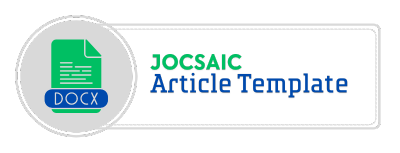Visualization and Analysis of Employee Performance Data Using a Power BI-based Business Intelligence Dashboard
DOI:
https://doi.org/10.64803/jocsaic.v1i2.19Keywords:
Business Intelligence, Power BI, data visualization, employee performanceAbstract
In the current digital and competitive era, the utilization of Business Intelligence (BI) technology has become crucial in supporting data-driven decision-making. This research aims to develop and analyze a Power BI-based Business Intelligence dashboard focused on visualizing employee performance. This study was conducted by collecting performance data from the Human Resource Information System (HRIS), which was then processed and visualized in the form of key metrics such as attendance rates, individual target achievements, productivity per division, and periodic performance evaluations. Power BI was chosen for its ability to integrate various data sources and present interactive visualizations that are easy for management to understand. The methodology used involves the ETL (Extract, Transform, Load) process, data model design, and the development of visual reports that support descriptive and comparative analysis. The results of this study indicate that the use of BI dashboards significantly helps the company in monitoring employee performance in real-time, identifying trends in productivity decline, and designing data-driven improvement strategies. In addition, this dashboard also serves as an effective communication tool between management and the HR division. Thus, the use of Power BI as a tool for visualization and performance analysis adds significant value to the strategic and data-driven management of human resources
Downloads
References
[1] S. Kraus, P. Jones, N. Kailer, A. Weinmann, N. Chaparro-Banegas, and N. Roig-Tierno, “Digital transformation: An overview of the current state of the art of research,” Sage Open, vol. 11, no. 3, p. 21582440211047576, 2021.
[2] A. Chikán, E. Czakó, B. Kiss-Dobronyi, and D. Losonci, “Firm competitiveness: A general model and a manufacturing application,” Int. J. Prod. Econ., vol. 243, p. 108316, 2022.
[3] Y. Bengio, A. Lodi, and A. Prouvost, “Machine learning for combinatorial optimization: a methodological tour d’horizon,” Eur. J. Oper. Res., vol. 290, no. 2, pp. 405–421, 2021.
[4] S. Khodijah, C. A. Rizki, and M. Hasanuddin, “Journal of Computer Science Artificial Intelligence,” vol. 1, no. 1, pp. 1–6, 2024.
[5] G. Q. Limon, “Workforce analytics in manufacturing: A review of MIS tools for labor planning, absenteeism monitoring, and productivity optimization,” J. Sustain. Dev. Policy, vol. 1, no. 01, pp. 90–114, 2025.
[6] P. Korherr, D. K. Kanbach, S. Kraus, and P. Jones, “The role of management in fostering analytics: The shift from intuition to analytics-based decision-making,” J. Decis. Syst., vol. 32, no. 3, pp. 600–616, 2023.
[7] R. Okon, C. S. Odionu, and B. Bristol-Alagbariya, “Integrating data-driven analytics into human resource management to improve decision-making and organizational effectiveness,” IRE Journals, vol. 8, no. 6, p. 574, 2024.
[8] K. J. Weiss, “The subject of objectivity, subjectively considered,” J Am Acad Psychiatry Law, vol. 49, pp. 422–427, 2021.
[9] S. Yerra, “Enhancing inventory management through real-time Power BI dashboards and KPI tracking,” Int. J. Sci. Res. Comput. Sci. Eng. Inf. Technol, 2025.
[10] A. Radonjić, H. Duarte, and N. Pereira, “Artificial intelligence and HRM: HR managers’ perspective on decisiveness and challenges,” Eur. Manag. J., vol. 42, no. 1, pp. 57–66, 2024.
[11] K. Patel, “Bridging Data Gaps in Finance: The Role of Non-Participant Models in Enhancing Market Understanding,” Int. J. Comput. Trends Technol., vol. 71, no. 12, pp. 75–88, 2023.
[12] Z. Liu, “Evaluating digitalized visualization interfaces: Integrating visual design elements and analytic hierarchy process,” Int. J. Human–Computer Interact., vol. 41, no. 9, pp. 5731–5760, 2025.
[13] P. M. Jolly, D. T. Kong, and K. Y. Kim, “Social support at work: An integrative review,” J. Organ. Behav., vol. 42, no. 2, pp. 229–251, 2021.
[14] B. H. Pahlavi and I. D. Widodo, “SUPPLY CHAIN PERFORMANCE MEASUREMENT MODEL AT PT. METITO INDONESIA BASED ON BUSINESS INTELLIGENCE POWER BI.,” Interdiciplinary J. Hummanity, vol. 2, no. 12, 2023.
[15] K. R. Gade, “Data-driven decision making in a complex world,” J. Comput. Innov., vol. 1, no. 1, 2021.
Downloads
Published
Issue
Section
License
Copyright (c) 2024 Imeldawaty Gultom, Eka Pandu Cynthia, Alabbas Hussein Saeed (Author)

This work is licensed under a Creative Commons Attribution-ShareAlike 4.0 International License.









